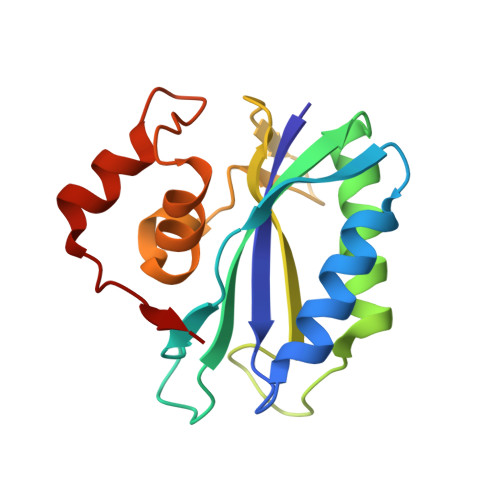Reaction trajectory of pyrophosphoryl transfer catalyzed by 6-hydroxymethyl-7,8-dihydropterin pyrophosphokinase.
Blaszczyk, J., Shi, G., Li, Y., Yan, H., Ji, X.(2004) Structure 12: 467-475
- PubMed: 15016362
- DOI: https://doi.org/10.1016/j.str.2004.02.003
- Primary Citation of Related Structures:
1RAO, 1RB0 - PubMed Abstract:
6-hydroxymethyl-7,8-dihydropterin pyrophosphokinase (HPPK) catalyzes the Mg(2+)-dependent pyrophosphoryl transfer from ATP to 6-hydroxymethyl-7,8-dihydropterin (HP). The reaction follows a bi-bi mechanism with ATP as the first substrate and AMP and HP pyrophosphate (HPPP) as the two products. HPPK is a key enzyme in the folate biosynthetic pathway and is essential for microorganisms but absent from mammals. For the HPPK-catalyzed pyrophosphoryl transfer, a reaction coordinate is constructed on the basis of the thermodynamic and transient kinetic data we reported previously, and the reaction trajectory is mapped out with five three-dimensional structures of the enzyme at various liganded states. The five structures are apo-HPPK (ligand-free enzyme), HPPK.MgATP(analog) (binary complex of HPPK with its first substrate) and HPPK.MgATP(analog).HP (ternary complex of HPPK with both substrates), which we reported previously, and HPPK.AMP.HPPP (ternary complex of HPPK with both product molecules) and HPPK.HPPP (binary complex of HPPK with one product), which we present in this study.
- Macromolecular Crystallography Laboratory, National Cancer Institute, Frederick, MD 21702, USA.
Organizational Affiliation:

















